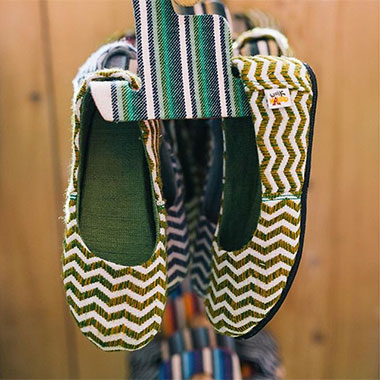4 alternatives to leather

Leather is probably one of the most used materials in the footwear and the apparel industry. However, new materials are becoming popular
The production of livestock (to obtain raw leather) and the tanning process (that uses polluting chemicals) are just two examples of the negative environmental footprint that producing leather has.
A lot of people, especially those who are concerned with the environment, have been asking producers to change the materials they use in footwear.
Considering animal sources of leather, there are a few alternatives, such as using fish leather, which are usually wasted by the fishing industry. The only problem is that fish leather is very fragile.
As producers and individual contributors keep searching for reasonable alternatives, it seems that eco-friendly (and vegan) alternatives are the most sustainable options:
Cork - Is environmentally friendly and renewable. It can be extracted from cork oak trees every nine years. And that’s not all, cork is a material that is easy to work with and it is naturally odor-resistant.
Recycled plastic - There are many plastics that result as a waste of industrial production which could be transformed to be used as a material to produce footwear.
Tree Bark Leather - Similar to cork, but it’s obtained from sustainable timber. Plus, it’s very durable, strong and each piece of leather is unique because of its’ varied natural grains.
Ocean leather - Is a less known alternative that uses kelp (large seaweeds) to produce an environment-friendly alternative to leather. The use of this material is still in early stages.
There are many other leather alternatives that have no environmental footprint. The question is if it’s already efficient to use them as a material for footwear production.
There aren’t still many suppliers of these materials, who can produce them in a large-scale, so the cost per unit would be cheap. Furthermore, some of these materials are really hard to handle and companies do not have the tools or skills to do it.
In this sense, companies should research and figure out which materials are easy for them to obtain and work with. It’s not necessary to change an entire production process. Companies can just go, step by step.
A lot of people, especially those who are concerned with the environment, have been asking producers to change the materials they use in footwear.
Considering animal sources of leather, there are a few alternatives, such as using fish leather, which are usually wasted by the fishing industry. The only problem is that fish leather is very fragile.
As producers and individual contributors keep searching for reasonable alternatives, it seems that eco-friendly (and vegan) alternatives are the most sustainable options:
Cork - Is environmentally friendly and renewable. It can be extracted from cork oak trees every nine years. And that’s not all, cork is a material that is easy to work with and it is naturally odor-resistant.
Recycled plastic - There are many plastics that result as a waste of industrial production which could be transformed to be used as a material to produce footwear.
Tree Bark Leather - Similar to cork, but it’s obtained from sustainable timber. Plus, it’s very durable, strong and each piece of leather is unique because of its’ varied natural grains.
Ocean leather - Is a less known alternative that uses kelp (large seaweeds) to produce an environment-friendly alternative to leather. The use of this material is still in early stages.
There are many other leather alternatives that have no environmental footprint. The question is if it’s already efficient to use them as a material for footwear production.
There aren’t still many suppliers of these materials, who can produce them in a large-scale, so the cost per unit would be cheap. Furthermore, some of these materials are really hard to handle and companies do not have the tools or skills to do it.
In this sense, companies should research and figure out which materials are easy for them to obtain and work with. It’s not necessary to change an entire production process. Companies can just go, step by step.











